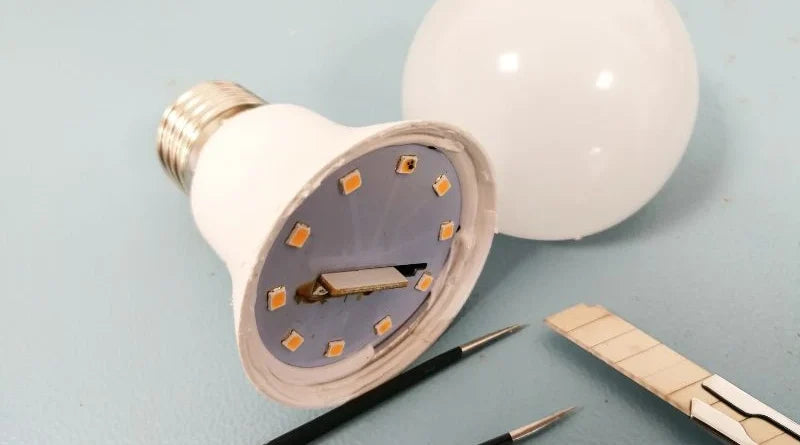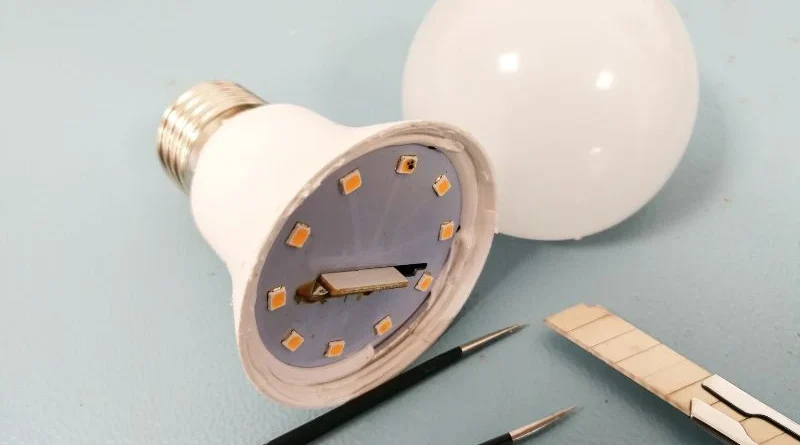
In the era of modern technology where energy efficiency is a top priority, light-emitting diodes (LED) are considered a symbol of sustainable lighting. These little heroes are everywhere – from giant stadium screens to simple light bulbs and smartphone screens. But have you ever wondered how these tiny components work? How can you significantly reduce energy consumption compared to traditional light bulbs? We invite you to join us on a journey as we delve deeper into the intricate workings of LED technology, unlocking its secrets and revealing why this technology is redefining our lighted world.
LEDs are electronic components that emit light when electricity flows through them. They use a process called electroluminescence, in which electrons move through a semiconductor material. When an electrical current is applied to an LED, the movement of electrons causes the release of energy in the form of photons, resulting in visible light. The color of an LED depends on the materials from which it is made, and they have diverse applications in areas such as electronics, communications and lighting due to their efficient operation and long lifespan compared to traditional light sources such as incandescent lamps or fluorescent tubes.
The science behind LED technology
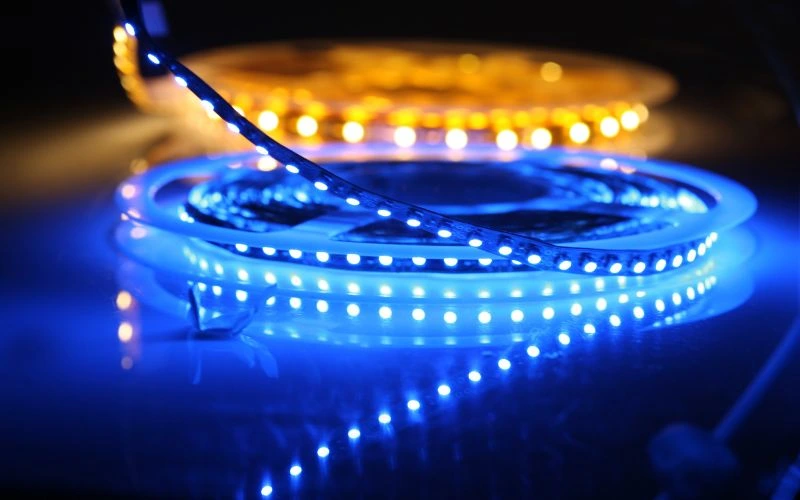
To understand how LED technology works, it is important to understand the science behind it. LED, short for light-emitting diode, works with a phenomenon called Electroluminescence . In this process, light is emitted when an electrical current flows through a semiconductor material in the diode. Unlike traditional incandescent bulbs, which require heating a filament to produce light, LEDs utilize the properties of semiconductors to produce light efficiently.
Think of an LED as a tiny “traffic controller” for electrons. When the diode is turned on, it allows a current of electrons to flow from one side (the negative or cathode) to the other (the positive or anode). As these electrons move through the semiconductor material, they recombine with “holes” – empty spaces available for electrons – and release energy in the form of photons or light.
To better understand this process, let's consider an analogy with children playing with blocks. Imagine you have two building blocks, a set of blue blocks (representing electrons) and a set of red blocks (representing holes). Now connect these sets with a bridge made of magnetic material (which is the semiconductor material). When you put blue and red blocks together on the bridge, they connect energy and release it in the form of sound or light.
Now that we understand how electroluminescence powers LEDs, let's look at an essential component that makes this phenomenon possible: semiconductor .
- It is crucial to understand how LED technology works. It is based on electroluminescence – a process in which light is emitted when an electrical current flows through a semiconductor material in the diode. Unlike traditional lamps, LEDs use the properties of semiconductors to produce light efficiently. Therefore, semiconductors are an essential component that enables electroluminescence and powers LEDs.
Role of semiconductors
Semiconductors play a key role in LED technology as they create an environment in which electroluminescence can occur. These materials have unique electrical properties and bridge the gap between conductors and insulators. How do semiconductors enable this bridging effect?
At their essence, semiconductors consist mainly of atoms arranged in regular patterns. However, some atoms within the structure have one or more extra electrons, while others lack a few electrons to achieve stability. This inequality in the number of electrons creates what is called a band gap – a range of energy in which no electrons are available for bonding.
In their natural state, semiconductors have two different energy bands: valence bands and conduction bands. The valence band contains electrons tightly bound to atoms, while the conduction band contains unbound or “free” electrons that can move more easily. Typically, the band gap between these two energy levels determines whether a material behaves as a conductor, insulator, or semiconductor.
Think of semiconductors as a ladder with two rungs – the bottom rung represents the valence band and the top rung symbolizes the conduction band. The electrons in the lower level need enough energy to rise to the upper level before they can move freely in the material.
Semiconductors made from special materials such as gallium arsenide (GaAs) or indium gallium nitride (InGaN) are used for LEDs. These materials have unique properties that allow for efficient electroluminescence under certain conditions.
By doping these materials with impurities through a process called doping, engineers can change their electrical properties and manipulate the movement of electrons. This controlled doping allows the production of LEDs that emit light in different colors or wavelengths depending on the semiconductor material used.
Now that we understand the critical role of semiconductors, let's examine how current and power play a role in LED technology.
Understanding Current and Power in LEDs
To truly understand how LED lights work, it's important to understand the key concepts of wattage and wattage. Current, measured in amps (A), refers to the flow of electrical charge through a conductor, such as a wire. In LEDs, electricity is responsible for activating the electrons in the semiconductor material, causing them to emit light.
Power, on the other hand, is the rate at which energy is transferred or converted per unit of time and is measured in watts (W). For LED lights, the wattage determines the intensity or brightness of the light emitted. Higher wattage results in brighter lighting, while lower wattage results in quieter output.
The relationship between current and power in an LED can be understood using Ohm's law. This states that the current flowing through a device is directly proportional to its voltage and inversely proportional to its resistance. Simply put, when a voltage is applied to an LED, it allows current to flow based on its unique resistance characteristics.
However, it is important to note that LEDs have a certain forward voltage drop that must be taken into account during operation. Exceeding this forward voltage can result in excessive current flow and potentially damage the LED. Therefore, it is recommended to use appropriate resistors or drivers in LED circuits to ensure proper current regulation and avoid adverse effects.
Let's consider an analogy: imagine an LED as a tap and electricity as water flowing through it. The brightness achieved depends on how open we turn the tap (daily) and the water pressure (force) we apply.
Now that we understand the importance of LED power and performance, let's look at some unique features that make these lights stand out from traditional lighting technologies.
- Today's high-efficiency LED lamps can convert more than 90% of the input energy into light, while only about 10% is lost as heat.
- A 2020 study found that more than 50% of all new lighting installations worldwide are based on LED technology due to its superior performance and longevity.
- According to the US Department of Energy, LEDs use at least 80% less energy than incandescent bulbs and last 25 times longer.
Unique properties of LED lights
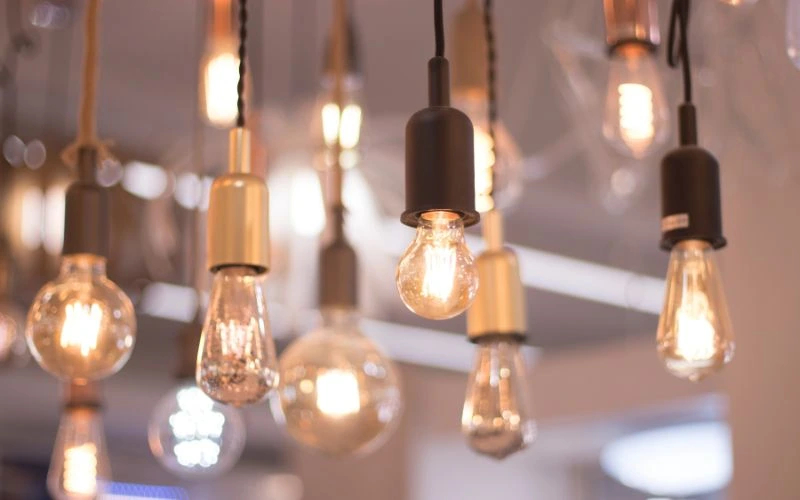
LEDs have a series of exceptional properties that have revolutionized the lighting sector. One of these properties is energy efficiency. Unlike incandescent bulbs, which convert a significant portion of electrical energy into heat, LEDs are highly efficient at converting electricity directly into light. Therefore, they require less energy to produce the same brightness, making them an environmentally friendly and economical choice.
Another notable feature of LEDs is their long service life. LED lights have a significantly longer lifespan compared to traditional bulbs. On average, an LED lasts up to 50,000 hours or more, while incandescent bulbs typically only last around 1,200 hours. This longer lifespan significantly reduces replacement frequency, resulting in lower maintenance costs and less waste.
Additionally, LEDs offer versatile color options. By using different materials and manufacturing techniques, LEDs can emit light in different colors without the need for filters or gels. This capability makes them ideal for applications where specific colors are desired, such as stage lighting or decorative purposes.
Imagine having an artist's palette with unlimited colors at your fingertips, allowing you to effortlessly paint vivid scenes and create captivating environments. LEDs offer just that to designers and lighting enthusiasts!
The LEDs also work instantly and reach full brightness almost immediately when turned on. Unlike traditional lighting technologies that require a warm-up period before reaching maximum illumination, LEDs provide instantaneous light output.
Furthermore, LED lights are extremely resistant to shock and vibration due to their semiconductor structure. This robustness makes them durable and suitable for various applications, such as: B. Lighting of vehicles or external installations subject to environmental factors.
After exploring the unique properties of LED lights, we now understand why these innovative light sources have gained enormous popularity in recent years.
Brightness and lighting insights
Understanding the concept of brightness and lighting is crucial when researching LED technology. Unlike traditional lighting technologies, LEDs emit light through a process called electroluminescence. In simple terms, electroluminescence occurs when an electrical current flows through a semiconductor material, causing it to emit photons, or particles of light.
When we talk about brightness in the context of LEDs, we mean the intensity of the light emitted by an LED. This measurement is generally expressed in lumens (lm) and indicates the total amount of visible light produced by the LED source. Higher lumen values mean higher brightness.
However, it is important to note that brightness alone does not determine how well a given room will be lit. However, illumination refers to the amount of light falling on a surface, measured in lux (lx). A higher lux value means better lighting.
To understand this better, consider the following example: You have two different LED bulbs with the same light output, but one of them has a narrower beam angle. The lamp with a narrower beam angle provides greater illumination in a specific area by directing more concentrated light to that area.
Additionally, brightness and lighting may be subjective depending on individual preferences and usage scenarios. For example, a well-lit retail store may require high levels of brightness and lighting to effectively highlight products and create an inviting atmosphere for customers. On the other hand, soft ambient lighting in a cozy living room may require lower brightness and lighting levels for a comfortable environment.
Now that we have gained valuable information on the topic of brightness and lighting in connection with LED technology, let us now look at the development of LEDs over the years.
LED development over the years
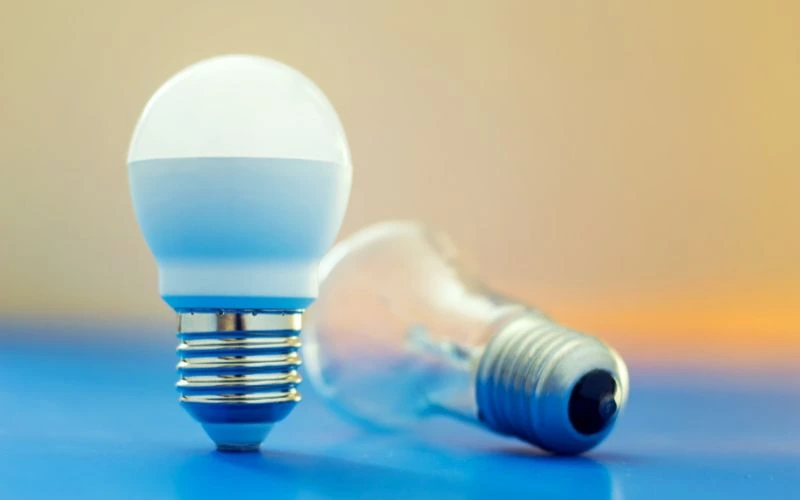
The development of LED technology has been simply remarkable. LEDs have come a long way, from their humble beginnings as indicator lights on electronic devices to becoming an energy-efficient lighting solution for a variety of applications.
Initially, LEDs were mainly used as indicator lights in electronic devices due to their small size and low power consumption. However, advances in semiconductor materials and manufacturing techniques have paved the way for brighter, more efficient LEDs.
An important milestone in LED technology was the development of blue LEDs in the 1990s by Japanese researchers Isamu Akasaki, Hiroshi Amano and Shuji Nakamura. This groundbreaking discovery laid the foundation for the development of white LEDs by combining blue LEDs with phosphor coatings. White LEDs quickly gained popularity because they offered greater energy efficiency compared to traditional incandescent or fluorescent lamps.
Since then, continuous research and innovation have led to significant improvements in LED technology. The efficiency of LEDs has increased over time, meaning you can get more light output with less power consumption. This has made LEDs extremely attractive for a variety of applications, from residential and commercial lighting to vehicle lighting, outdoor displays and even garden lighting systems.
Think of LED technology as a flowering tree that started as a small seed. Each year it grew stronger roots and branches and became an incredible source of light.
As LED technology advances, we're likely to see more developments in color reproduction capabilities, dimming options, smart lighting integration, and longer lifespans. These advancements will only solidify LEDs' position as the future of lighting technology.
Use of LED in different scenarios

LED technology has revolutionized the way we light our world and offers numerous advantages over traditional lighting solutions. The versatility of LEDs allows them to be used in a variety of scenarios to meet different needs and requirements. Let's explore some of the different scenarios in which LED lighting shines.
LEDs are becoming increasingly popular in residential lighting. They are now commonly used in household appliances such as lamps, fixtures, and even decorative lighting options. The energy efficiency of LEDs allows homeowners to reduce their electricity bills while enjoying high-quality lighting in their living spaces.
LEDs have proven to be extremely effective in the commercial sector. Their long service life and low maintenance requirements make them ideal for companies that want to minimize their operating costs. Additionally, LEDs offer excellent color reproduction, making them suitable for retail environments where accurate color representation is critical.
For example, imagine walking into a clothing store that relies on fluorescent lighting. The tones and tones of clothing may appear distorted or muted compared to natural light. However, by replacing fluorescent lamps with LEDs, the true colors of clothing can be accurately displayed, improving the shopping experience.
The automotive industry has also adopted LED technology due to its versatility and longevity. From headlights and taillights to interior lighting and dashboard displays, LEDs offer better brightness and longer lifespans than traditional bulbs. Furthermore, they use less electricity, which is particularly advantageous for electric vehicles where every gram of energy counts.
Outside : LED lighting is crucial for illuminating streets, parks, parking lots and other public places. High-intensity LED lights and directional lighting ensure optimal visibility with minimal light pollution. Furthermore, its long service life reduces maintenance costs and contributes to sustainable lighting solutions for communities.
Now that we know the diverse uses of LED lights in different scenarios, let's take a closer look at some common applications where LED technology has made a significant impact.
Popular Applications of LED Lights
The rise of LED technology has transformed traditional lighting and opened up new opportunities for innovative applications. Here are some popular and innovative areas where LEDs are making a notable difference:
- Smart Lighting : With the advent of smart homes, LED lights have become an integral part of automated lighting systems. These lights can be controlled remotely, dimmed or brightened as desired, programmed to turn on and off, and even change color to create different moods.
- Display technology : LED displays are widely used in various environments, such as large-scale outdoor billboards and digital signage. Due to their brightness, color accuracy and flexibility, LEDs are ideal for delivering stunning visual content.
- Backlight : LEDs have revolutionized the display industry by providing thin, power-efficient backlighting solutions for televisions, computer monitors and mobile devices. Even LED lighting improves visual clarity and reduces eye strain.
- Horticultural Lighting : LEDs have made their way into indoor gardens and greenhouses. By emitting specific wavelengths of light optimized for plant growth, LED grow lights provide plants with the light spectrum they need to thrive, thereby increasing productivity and reducing energy consumption.
- Artistic lighting effects : LEDs offer endless possibilities for creating fascinating lighting effects in artistic installations, stage performances and architectural projects. Its small size and ability to produce vibrant colors add a dynamic element to visual compositions.
For example, imagine visiting an interactive art exhibit that uses LED lighting to transform the room into a magical wonderland. The interplay of colors, glowing sculptures, and synchronized light patterns can transport you to a completely immersive experience.
From everyday home use to stunning art installations, LED lights have become the lighting solution of choice in many applications.

